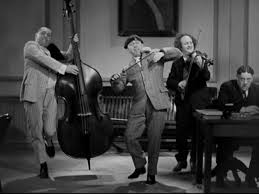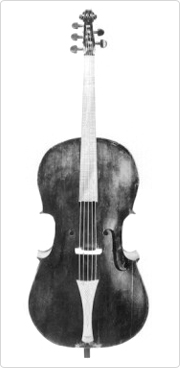
String Bass Introduction
Share
The string bass (pronounced like ‘base”) is the largest and lowest sounding member of the string family. It is sometimes called contrabass, sound is produced by drawing a bow across the strings or by plucking the strings.

For the Acoustic String Bass, the maintenance includes wiping the body of the instrument with a soft cloth and changing the strings sometimes. Regular tuning is needed and your teacher will help you in the beginning. There are just two main pieces of the instrument: the instrument and the bow; but you'll need a carrying bag, rosin and an end pin rest.
The bow can be tightened to play and should be loosened before it is put away.
The bass is a very old instrument. It has been basically unchanged for hundreds of years. A popular new version of the string bass is the electric bass guitar. A bass guitar is tuned the same and has a similar sound to a plucked string bass. The electric bass uses an amp to project the sound; you can easily learn it from the acoustic bass skills.

There are also electric upright basses; they require an amp also.

The string bass comes in various sizes. The correct size for each student depends on the overall size of the student. Generally speaking, by the time students reach 8th or 9th grade, most will require a 3/4 size instrument which is also used by most adults. Before that age, students may use an instrument more your size.
A good bass player will always be a very valuable member of the orchestra since the number of bass players is so small. However, the bass is still used in virtually all styles of music throughout the world. It is well known for its use in symphony orchestras as well as rock and roll, country and bluegrass bands and other popular groups. Most jazz groups include a string bass or at the very least an electric bass guitar.
The origin of the contrabass
The contrabass plays a very important role in providing solid lower register support for the stringed instruments occupying the front of the orchestra. However, there is one aspect in which the contrabass differs significantly from the violin, viola, cello, and other stringed instruments. The contrabass was originally a relative of the viola da gamba, a completely different kind of stringed instrument. Instruments in the viola da gamba family were often in use until the second half of the 18th century. They differ from instruments in the violin family in that fingerboards are fretted and their bows are held differently when playing. The "violone," the largest instrument in the viola da gamba family, was responsible for playing in the lower register. It is also the instrument that the contrabass ultimately developed from.

A violone
The history of the contrabass
The contrabass was originally a member of the viola da gamba family, so the number of strings varied from three to six even after the turn of the 19th century, and there were many varieties of these instruments of roughly the same size as a cello. Modern instruments tend to have four or five strings tuned in fourths. When playing the contrabass, either a French bow or a German bow is used. French bows resemble violin bows and are gripped similarly, while German bows (used in Germany and Austria) developed from viola da gamba bows and are held with an underhanded grip.

